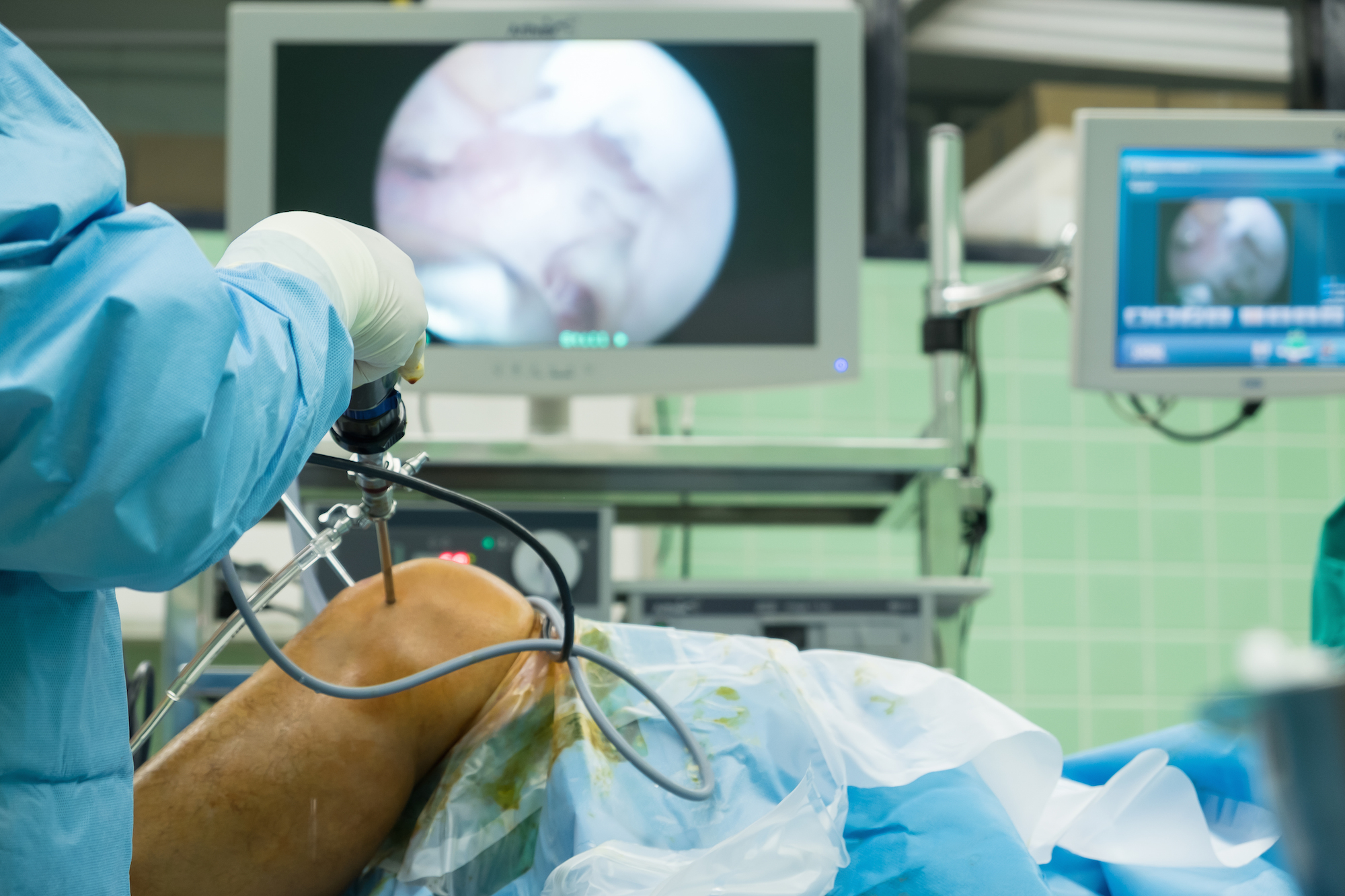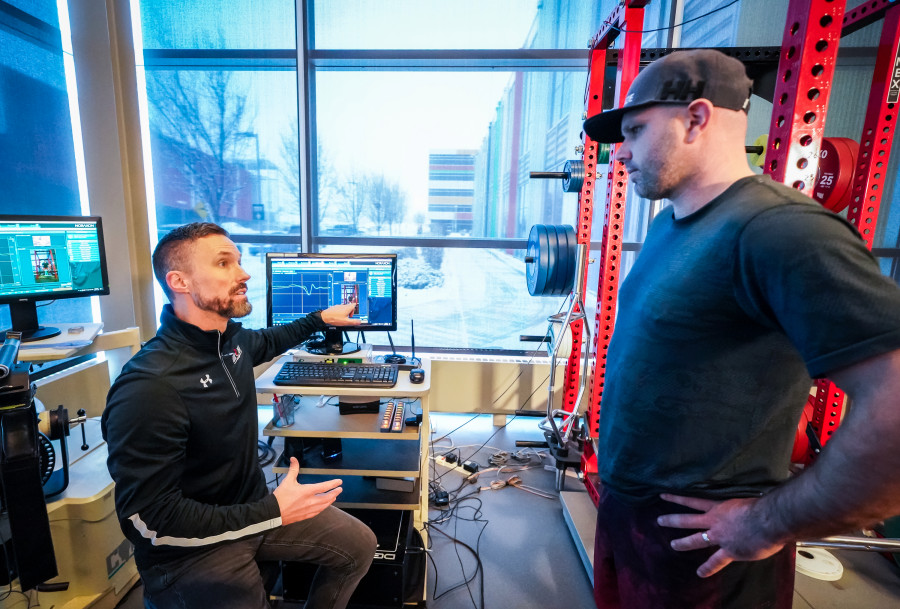The first real snowfall of the season is always exhilarating. If you’ve ever been injured in the snow, however, fluffy white flakes can be bittersweet. Knee injuries are the most common for skiers, and although you can tear more than one ligament at a time, the Anterior Cruciate Ligament (or ACL) is the most common — and it often never heals. The good news is that research shows a little advance training is effective in preventing injury.

PREVENTION
Studies with female soccer players (who are at a higher risk of ACL tears than men in field sports) show that preseason training helped prevent injury, up to a 30-50 percent improvement. But there’s a catch: Although the stats favor men in sports like soccer, both men and women have an equal statistical chance for tearing ACLs while skiing, making preseason training important for everyone.
“It is not just your leg muscles, quads and hamstrings that you need to work, but it’s your core strengthening that makes a huge difference,” says physiotherapist Barb Clemes. “If you watch Bode Miller’s famous save, you can see him keeping the core so stable he could bring his ski back onto the snow.”
You will likely never make a save like Bode (no matter how many ab workouts), but the video is a great example of how movement can up your chances of avoiding injury.
“Strength, balance, agility, proprioception and biomechanics are all good things to work on,” notes Clemes, also noting the benefit for your neuromuscular connections. “Keeping your legs aligned and not dropping your knees inside of your big toe is crucial. When you start to drop your knees inside they are winding up the ACL, and it just needs a little force to tear.”
Another simple precaution is to stay hydrated. With dehydration, your reactions slow down considerably. Equipment advances are often a less obvious factor: some gear modifications that improve performance can lead to more injury. Since the advent of shaped skis, ACL injuries have skyrocketed. There are some companies working on the compromise. More on that later.
Of course, some crashes are just going to happen and there is nothing you can do.
Expert Tips on How to Prevent Knee Injuries While Hiking

SURGERY OR NO SURGERY – What to Do if You Tear Your ACL
So now you have a torn ACL. Some people are copers and others are non-copers. Physiology and joint shape have a lot to do with someone who can ski without an ACL, and someone who can’t even walk down the street. But even those who can cope will eventually have some pain.
“A third of people who are what we call a mesomorphic or strong, not super stretchy and also have good alignment, can cope,” says Dr. Mark Heard, the renowned orthopaedic surgeon who works on many of the country’s top athletes. “It’s tough, because they tend to, every couple of years, tweak their knee again and then the next thing you know, they’re 50 and very arthritic.”
Dr. Heard tore his ACL while backcountry skiing a few years ago and had to go through the same recovery process as his paitents.
“I hit a tree, caught the tip under the snow and twisted it slow. I heard it pop. I knew it, but I didn’t,” Heard says. “I myself, was in denial.”
7 Ways to Avoid Injury As a New Skier
Dr. Heard was not a coper and was faced with the same three options of other ‘non-copers.’ That is: to modify his lifestyle, to brace his knee, or to fix it with surgery to prevent repeat injury.
Because of Heard’s active lifestyle, he decided to fix his knee. He did what he suggests to all his patients (who aren’t pro athletes that need to get fixed ASAP). He waited months and got his knee back as strong as he could. He did so by cycling.
“We will do ACL acute, for say a National Ski Team member, but they wrestle with stiffness,” Heard says. “The best practice is to let your knee settle down first and get your swelling down and range of motion back and your leg as strong as possible.”
How Injury Rehab Made Miami Heat Forward Justise Winslow Even Stronger
Location matters as well. Consider a specialized center rather than a place that only does a few ACLs a year. In a year, Dr. Heard and his team perform a quarter of Alberta’s ACL surgeries, which is around 700, nearly 250 of which he performs.
There are a few options for a graft. The first is using a piece of your hamstring from the same knee, or the other knee. The second is using a patellar tendon or your quadriceps tendon. And the fourth graft option is to use donated human tissue or “allograft.” Deciding which to use depends on the patient’s age, and if they’ve had the surgery before.
“The ACL does try and heal but does so poorly, so we often augment what you have in there with a graft,” Heard adds. “So we save everything you’ve got. But the graft is your new ACL. The tendons grafts, over three years they turn back into ligaments (because the ACL is actually a ligament and the collagen is different). If you look at the collagen with an electron microscope after three years, it slowly becomes a ligament.”
The full healing process takes some time and varies with each patient.
8 of the Best Ski Videos to Drool Over This Winter

REHABBING YOUR KNEE
Everyone is almost guaranteed one week on the couch. Then the first three months are linear. At three to six months you start agility and plyometrics. At six to nine months you can do sports-specific drills. The highest rate of re-injuries or graft failures happen at five to nine months if one tries to return to full speed too early. It is recommended that you don’t go back to normal for at least a year. And it’s critical to know that recovery can at times be more of a mental battle than a physical one.
“I was definitely nervous my first year,” Heard admits. “By the second year I stopped thinking about my knees. I ski like I used to.”
Two years is typically the magic number, but as the return to sport guru, Matt Jordan Ph.D., CSCS will attest, everyone is different and has different goals. Telling someone to wait two years could have other adverse effects. That is where Jordan comes in. He helps Olympians and other athletes return to sport by studying every aspect of the process.
“A big focus of our research is to develop these testing methodologies and training methodologies,” Jordan says. “There are three stages: return to health, return to sport, and then return to performance.”
Some athletes oscillate in their process. They feel able to jump as high on both legs, but may likely be compensating — and thus adding more stress to the other leg.
“The reality is that your body now sort of reverts back toward some of the habits and compensation strategies that you would’ve had before, and you’ll end up kind of going backwards a little bit,” Jordan notes. “So what we try to do is have a very, very progressive and monitored return to sport process — and that’s where a lot of our research is focused, to develop these diagnostic testing tools that we can use that can pinpoint these deficits.”
One thing is for sure, you will never be the same after surgery. You might end up being able to ski harder and train your body to move more properly, or you could find yourself taking a step back. However, you are not alone. Many people tear their ACLs. It’s better to look at it as an odd rite of passage rather than the end of the world.
What to Eat and Drink to Crush Any Winter Sport
The post How to Deal With an ACL Tear, According to Experts appeared first on Men's Journal.
Comments are closed.